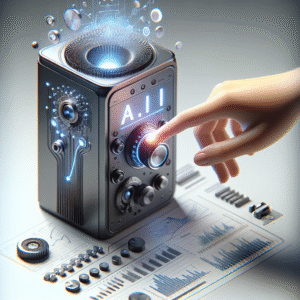Stay Ahead of the Curve: Expert Strategies for Monitoring Drift in Production
Table of Contents
- Introduction
- Understanding Drift in Production
- Types of Drift
- The Importance of Monitoring Drift
- Effective Monitoring Strategies
- Tools for Monitoring Drift
- Real-World Case Studies
- Best Practices for Monitoring Drift
- The Future of Drift Monitoring
- Conclusion
Introduction
In our fast-paced, data-driven world, machine learning models are becoming the backbone of decision-making for many organizations. But here’s the catch: these models can drift over time as data patterns change, which can seriously affect their performance and accuracy. In fact, a recent study found that more than 60% of machine learning models experience some form of drift within just six months of being deployed! So, how do we keep our models from losing their edge and ensure they stay reliable and robust?
In this blog post, we’re diving into some practical strategies for monitoring drift in production. Drawing inspiration from industry experts and real-world applications, we’ll cover everything from the different types of drift to effective strategies and the best tools out there. Whether you’re a data scientist, an ML engineer, or a business leader, this guide aims to arm you with the knowledge to tackle drift head-on.
Understanding Drift in Production
So, what exactly is drift? Essentially, drift refers to the changes in the statistical properties of either the target variable or the features that your model uses over time. When drift happens, you might see a big gap between what your model predicts and the actual results. Understanding this phenomenon is crucial for keeping your predictive models working at their best.
What Causes Drift?
Drift can arise from a variety of factors, including:
- Changes in User Behavior: As people’s preferences evolve, the data we collect may stop representing the target population accurately.
- Environmental Changes: External influences, like shifts in the economy or new tech breakthroughs, can change the underlying data distributions.
- Data Quality Issues: Errors or inconsistencies in data collection can introduce noise—think of it as static on a radio—that leads to drift.
How Drift Impacts Model Performance
When drift strikes, your model’s accuracy can take a nosedive, leading to some pretty undesirable business outcomes. Take an online store, for example: if their recommendation system isn’t updated in response to drift, it might suggest products that are no longer in demand—resulting in lost sales and unhappy customers.
Types of Drift
It’s important to be aware of the two main types of drift: covariate shift and concept drift.
Covariate Shift
Covariate shift occurs when the input features’ distribution changes, but the relationship between these inputs and the output (the target variable) stays the same. This could happen if new customer segments emerge that behave differently from those in the training dataset.
Concept Drift
On the other hand, concept drift happens when the relationship between the input features and the target variable shifts. For instance, if a model is predicting loan defaults, and economic conditions change, this could affect how likely borrowers are to repay their loans, leading to drift.
The Importance of Monitoring Drift
Keeping an eye on drift is vital for a few key reasons:
- Maintaining Model Accuracy: Regular monitoring helps catch when models start to fall short, letting you intervene before things get out of hand.
- Cost Efficiency: Spotting drift early can save organizations from making costly decisions based on inaccurate predictions.
- Improving Decision-Making: When your models are accurate, you can make better business decisions, which ultimately boosts profitability and keeps your customers happy.
Effective Monitoring Strategies
So, how do you keep track of drift effectively? Here are some strategies to consider:
Regular Model Evaluation
It’s key to regularly assess how your model is performing. This could mean checking how well its predictions stack up against actual outcomes over time and keeping tabs on metrics like accuracy, precision, and recall.
Using Statistical Tests
Employing statistical tests—think Kolmogorov-Smirnov or Chi-squared tests—can help you figure out if the distributions of your training data and current data are significantly different. These tests can give you a solid quantitative measure of drift.
Setting Up Alerts
Why not take a proactive approach? Setting up automated alerts can notify your data scientists when model performance dips below a certain threshold. Early warnings can make all the difference!
Tools for Monitoring Drift
There are a handful of tools out there that can help you monitor drift in production. Here are a few worth checking out:
MLflow
MLflow is an open-source platform that helps data scientists manage the entire machine learning lifecycle—from experimentation to deployment. It also tracks model performance over time, which is super handy.
TensorFlow Data Validation
This tool is designed for analyzing and validating machine learning data. It’s great for spotting anomalies and drift in your data distributions, ensuring your models are built on consistent, quality data.
Alibi Detect
Alibi Detect is a library that offers algorithms for detecting drift and outliers in data. It supports various statistical tests and can easily integrate into your existing workflows to keep an eye on model performance.
Real-World Case Studies
Let’s take a look at how drift monitoring has been effectively employed in different industries:
Healthcare Example
A healthcare organization used drift monitoring to track their predictive models for patient readmission rates. By putting regular evaluations and alerts in place, they managed to adjust their model in response to shifts in patient demographics, ultimately reducing readmission rates by 15%!
Finance Example
In the finance sector, a company relied on machine learning to assess creditworthiness. By continuously monitoring for drift, they spotted changes in economic indicators that influenced borrower behaviors. This allowed them to recalibrate their models and cut down on default rates.
Best Practices for Monitoring Drift
To optimize your drift monitoring efforts, keep these best practices in mind:
Implement a Feedback Loop
Creating a feedback loop that incorporates real-time data can seriously boost model performance. Updating your models with fresh data ensures they stay relevant and accurate.
Cross-Validation Techniques
Using cross-validation techniques during model training can help you spot potential drift before your model even goes live. By simulating different data scenarios, you can better anticipate how your models will perform in the wild.
Collaboration Across Teams
Encouraging teamwork between data scientists, domain experts, and business stakeholders can unearth diverse insights into potential drift sources. This collaborative approach leads to a more thorough understanding of the challenges at hand.
The Future of Drift Monitoring
The landscape of drift monitoring is always evolving, with new technologies and machine learning techniques emerging all the time. As we look ahead, practitioners can anticipate more advanced methods for detecting and managing drift.
Automated Drift Detection
Who knows? Future developments might bring us automated systems that can detect drift without human input. These systems could harness AI to spot patterns and anomalies in real-time.
Integration with Continuous Learning
As more organizations adopt continuous learning frameworks, drift monitoring is likely to become an integral part of the model lifecycle. This seamless integration will allow for smooth updates and enhancements to models as new data rolls in.
Conclusion
Monitoring drift in production is crucial for keeping machine learning models accurate and reliable. By understanding drift types, adopting effective monitoring strategies, and utilizing the right tools, organizations can significantly reduce the risks associated with drift. As the world of data science continues to advance, staying updated on best practices and new technologies will empower you to keep your models sharp and effective. If you want to go deeper on this topic, consider joining workshops, webinars, or industry conferences focused on machine learning and data monitoring.
Ready to elevate your drift monitoring game? Start implementing the strategies we discussed here to ensure your models remain strong and effective for the long haul!






